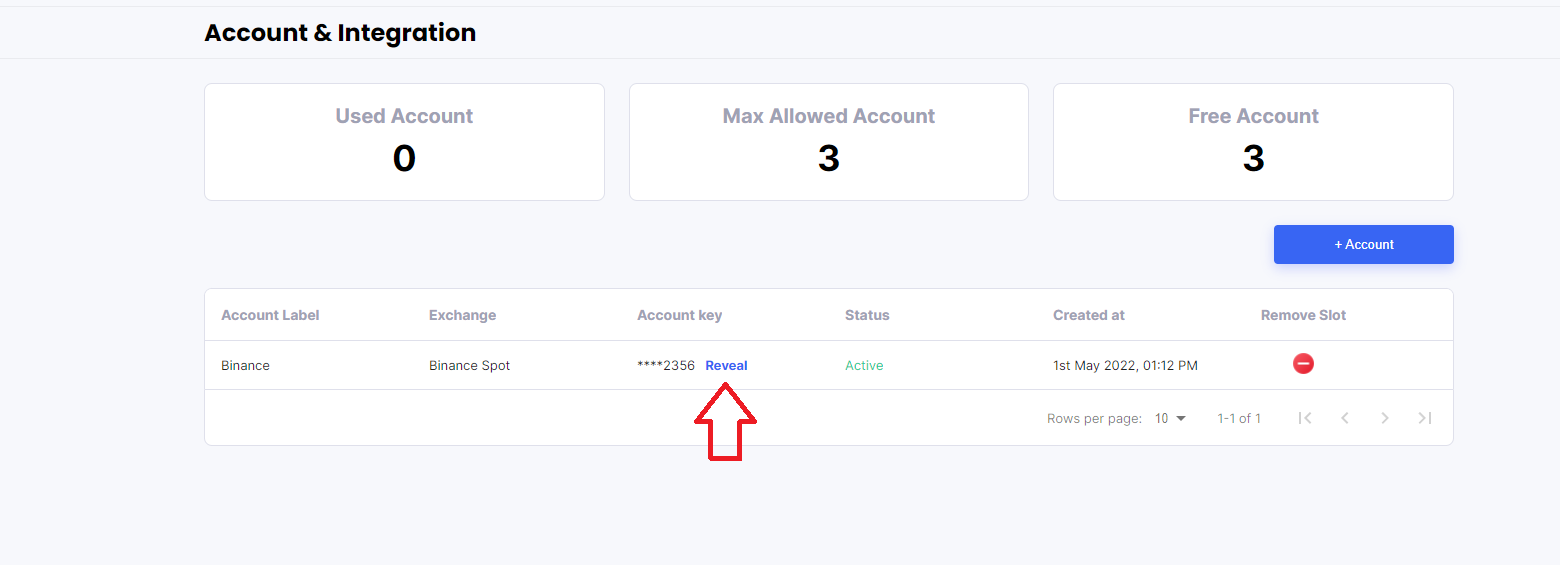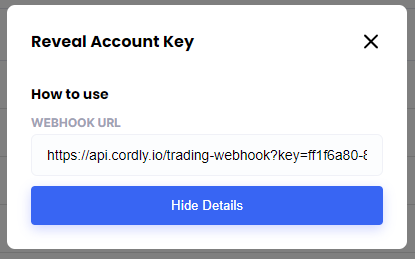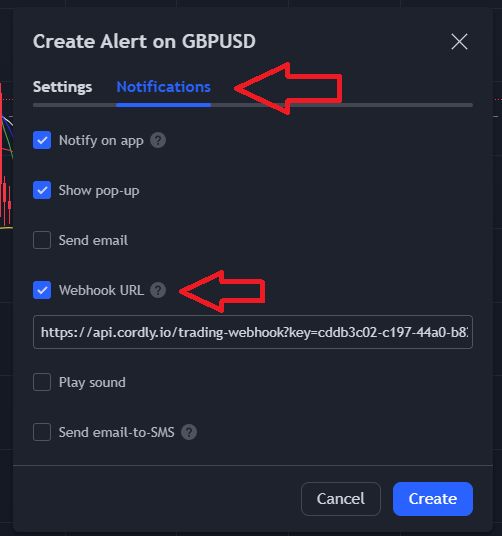TradingView Alerts to Binance - Full Guide
Full guide on how to connect TradingView alerts to Binance
Morten Madsen
Last Update a year ago
Step 1) Setup Binance
1) Log in to your Cordly account and go to "Account & Integration"
Then click on "Add Account" and choose Binance - either spot or futures depending on what you will use.
2) Open a new browser window, go to Binance, and log in.
In the top right corner, go to "Account".

Click "API Management" on the left and then "Create API" in the top right.

Select "System generated" and next

Give your API a name. It can be anything you want it to be.

Binance will ask for authentication.
Once that is approved you will receive your keys. You will need to edit restrictions.
- Enable "Restrict access to trusted IP's Only". Insert Cordly server IP 18.195.39.46
- Enable "Enable Futures"
- Enable "Enable Spot & Margin Trading"
Click save. Binance will ask you to verify yourself again. Don't close the window. You need the keys.

3) Copy your API key and your secret API key into Cordly.
The slot label is the name of the account. You can name it what you want it to be named.

When you have inserted the correct information then click "Add New Account". You have now connected Binance with your Cordly account.
4) In the ByBit platform go to Futures, USDS-M Futures, and then click settings in the top right corner. Then go to position mode and change it to "One-Way Mode".

Step 2) Connect with TradingView
1. Login to your Cordly account and go to "Account & Integration". Then click on "Get Credentials / Get TradingView Webhook" to get the webhook needed for TradingView.

2. When you click "Get Credentials / Get TradingView Webhook" you need to type your Cordly password to see the URL.
Copy the URL from the "Webhook URL" field. This URL is needed in TradingView

3. When creating an alert inside TradingView you will need to paste that URL into the "Webhook URL". You only need to do this one time and then TradingView remembers the URL until you change it. (To create an alert in TradingView, just right-click and click "Add alert". BUT note that you can set up a potential trigger for a trade when doing so.)

4. You have now successfully connected TradingView with your Cordly account. All future alerts will be sent to your Cordly account. To execute trades you will need to write the correct message in the message field so Cordly knows what to do when the alert triggers.
We have a full guide for TradingView syntax here
Step 3) Configure your trading settings
Before you start trading you will need to configure your trading settings. You find these on the left of your Cordly Dashboard under "Trading Settings". Select your account and the settings available will show.
To set up your settings correctly you need to do the following:
1) Main settings (also called trading settings) -> Select the trading settings you want Cordly to send with the trade when executing the signal.
The minimum requirement of settings is trade size, and the number of Take profit levels you want to copy. See arrows below

2) Specific settings - Click "add new pair" and select the trading pairs you want to enable to trade. When you have added them to the top list, then click Save


3) After saving your pair list, you see a column named "Alias". This column is used when your signal provider uses a different name for the trading pair than the exchange uses. Example: Your broker has the trading pair BTC/USDT:USDT but your signal provider writes BTCUSDT in their signals. Next to BTCUSDT you need to write Gold. You can use the blue buttons that match the right syntax to autofill all trading pairs with that alias. In this example it's the button called PAIRUSDT you would use.
Another example is if your signal provider writes BTC/USDT then it's the button called PAIR/USDT to use.


